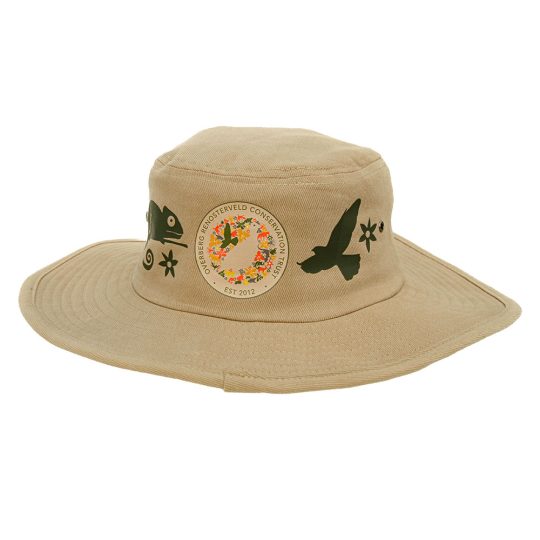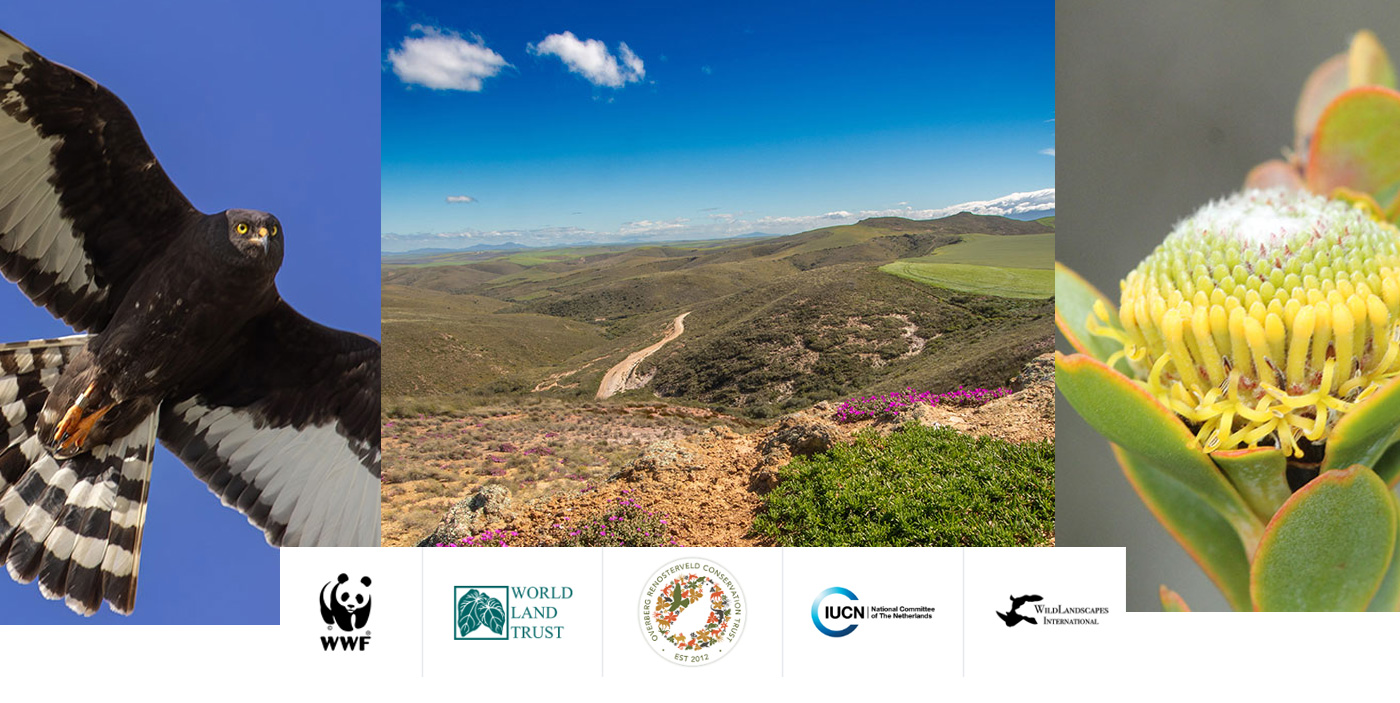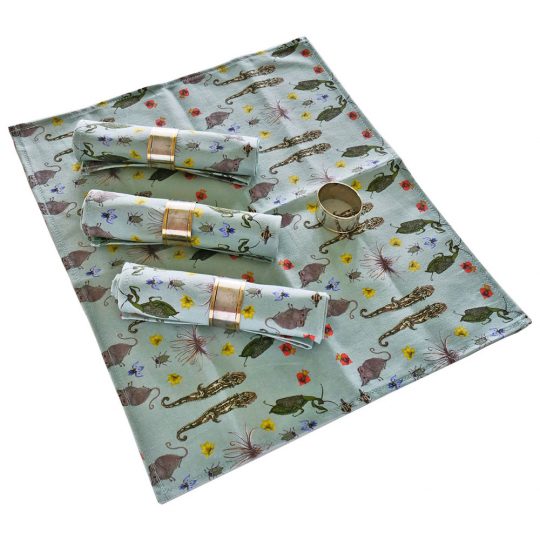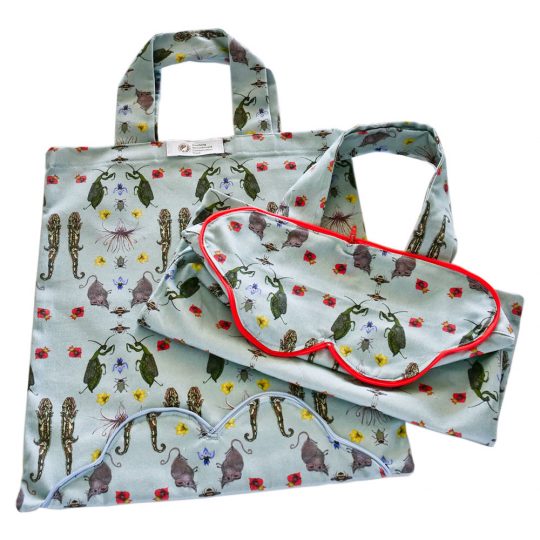The first quarter of 2024 is behind us now - it has been jam-packed and productive; and as a result, this Earth Day we have several stories to share.


The farm, Plaatjieskraal, is situated between Bredasdorp and Swellendam and lies close to our Haarwegskloof Renosterveld Reserve. These partners who helped the ORCT to realise this dream include WWF South Africa, the UK-based World Land Trust, the Dutch IUCN NL Land Acquisition Fund, as well as WildLandscapes International, based in America.
For Odette and the team, this has been a 16-year process of negotiating and fundraising to finalise this important acquisition.
Renosterveld is highly fragmented with fewer than 50 fragments being over 100 ha in size. Almost all Renosterveld remnants occur on privately-owned land, creating an additional challenge for conservation. All these factors, coupled with the large range of endemic and threatened plants and animals inhabiting this bio-hotspot, make this unique rhino veld one of the most threatened habitats on Earth and putting it in urgent need of conservation attention.
So the Overberg Renosterveld Conservation Trust has partnered with NGOs and farmers to test a new conservation structure – called a Conservation Easement. Easements give landowners an accessible model to conserve their land.
How does it work? A servitude is attached to the title deed – with a management plan attached to the servitude. So the ORCT team provides support, including incentive funding, to protect remaining renosterveld patches.
The blue print for this model is in place. And we’ve had our first easements signed already. Now we’re rolling out our management support to landowners who want to care for their renosterveld, forever. Find out more.
The Overberg contains some of the largest and most intact Renosterveld remnants consisting of four different vegetation types, namely Central Rûens Shale, Eastern Rûens Shale, Western Rûens Shale, and Rûens Silcrete Renosterveld. All four are Critically Endangered.
Just take a look at these… It’s a series of Renosterveld-inspired gift options available on our online shop. This range includes buffs, re-usable shopping bags, serviettes and more. The designs were specially created for the ORCT. So you won’t find them anywhere else.
What’s more, you GIVE BACK to Renosterveld preservation when you buy any of these products.



The first ever Field Guide to the Renosterveld of the Overberg is now available. The guide is the result of five years of extensive research. It’s authored by Dr Odette Curtis-Scott, Mike Goulding, Nick Helme, Rhoda McMaster, Sean Privett and Prof Charles Stirton. It features 980 Renosterveld plant species, as well as 140 of the animals you’ll find in this habitat. It also includes an illustrated glossary, details on Renosterveld ecology and management guidelines for landowners.
Get the latest ORCT News in your inbox
Please share the love on social media
At the southern tip of Africa lies the Cape Floral Kingdom – The smallest, yet richest plant kingdom in the world, most renowned for its beautiful Fynbos with its Proteas. A component is known as Renosterveld, named after the Rhino (Renoster in Afrikaans) that used to roam the region.
Renosterveld is the richest bulb habitat on Earth, displaying a spectacular bloom over the spring season. Not only does this system comprise a wealth of plant species beyond one’s wildest imagination, it is also home to a diversity of mammals, reptiles, insects, amphibians and birds.
Our more showy Fynbos habitats have been afforded much protection while our lowland Renosterveld has been overlooked and largely neglected – despite it being renowned for its incredible spring flower displays and extraordinarily high levels of biodiversity and endemism.
Unlike Fynbos, which grows on poor sandy soils, Renosterveld is found on more fertile soils, and has been developed for agriculture to such an extent that less than 5% remains today. This unique habitat is in itself a biodiversity hotspot, but is teetering on the brink of extinction.
Working with Farmers to Save Renosterveld
The Overberg Renosterveld Conservation Trust is uniquely positioned to bring landowners, communities, wildlife agencies, and NGOs together to conserve the last remnants of Lowland Renosterveld in several strategic locations. We help farmers a.o. with the management of their valuable veld more appropriately.
The Cape Floral Kingdom is the smallest, yet richest Plant Kingdom on Earth. A system recognized as one of the World’s seven Biodiversity Hotspots.
Lowland Renosterveld is a highly diverse vegetation type, most renowned for its spectacular Spring (August/September) flower displays.
Renosterveld once covered most of the Lowlands of the Overberg, but due to its fertile soils it is now highly transformed for agriculture.
All four Overberg Lowland Renosterveld vegetation types are Critically Endangered.
Around 300 years ago, when European settlers started moving into the region, the Overberg lowlands were teaming with large game, like Black Rhino, Bontebok, Eland and the now extinct Bluebuck and Quagga. Unfortunately, these lowlands were most suitable for agriculture and over time 95% of these habitats have been converted to cash crops and wildlife replaced with livestock.
What is left of Renosterveld habitat today is rather different from that before large-scale agricultural development. It was probably a far more grassy system with an even higher diversity of shrubs and bulbs. Sadly, the replacement of large game with small, selective feeders, such as cattle and sheep, combined with years of mismanagement, has severely degraded this ecosystem and is often dominated by ‘unwanted’ shrubs, such as Renosterbos.
Renosterveld is now highly fragmented with the smallest remnants as little as one square meter. The Overberg contains some of the largest and most intact Renosterveld remnants, consisting of four different vegetation types, all Critically Endangered. Almost all Renosterveld remnants occur on privately-owned land, creating an additional challenge. All these factors, coupled with the large range of endemic and threatened plants and animal species inhabiting this bio-hotspot, makes this unique habitat one of the most threatened habitats on Earth and putting it in urgent need of conservation attention.